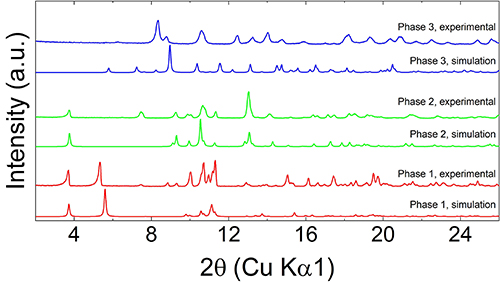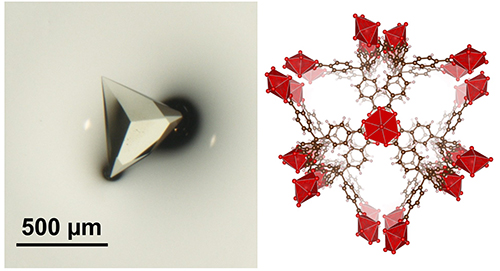Transformation of Dynamic Crystalline Metal–Organic Frameworks on an Energy Landscape

IMSERC’s state-of-the-art PXRD and SCXRD capabilities propel my research forward and reveal fascinating chemical phenomena
Sylvia L. Hanna, PhD.
Chemistry Department
While we often think of crystalline materials as stagnant systems frozen in place, certain classes of materials are in fact dynamic structures with hosts of vibrational modes, solvent interactions, and time and temperature sensitivity. Understanding the dynamicity of these systems is important to provide a fuller picture of their structural conformations and ultimately assist in developing design rules for materials with desired properties. Single crystal (SCXRD) and powder (PXRD) X-ray diffraction are optimal tools to study dynamic crystalline materials on certain time scales. These crystallographic techniques allow us to capture complimentary snapshots of crystalline material transformations which can then be complied into a complete material portrait.

As a group of crystalline materials, metal–organic frameworks (MOFs) consist of inorganic nodes and organic linkers which self-assemble into 2- or 3-dimensional frameworks. My research centers around understanding the transformation of dynamic crystalline MOFs on an energy landscape. For example, through SCXRD and PXRD, we tracked guest-dependent phase transitions of the uranium-based MOF, NU-1302, a system which alters its channel conformation in response to guest conditions and external stimuli. The system becomes more distorted and less energetically favorable in response to guest molecules with decreasing dielectric constant. PXRD can also assist in determining the effects of other external stimuli such as alpha and gamma radiation on MOFs
Because multiple topologies and conformations on an energy landscape are available from a single linker/node pair, MOFs can also undergo crystalline transformations from kinetic products to thermodynamic sinks. We have observed such topological transformations in other uranium-based MOF systems via SCXRD.
